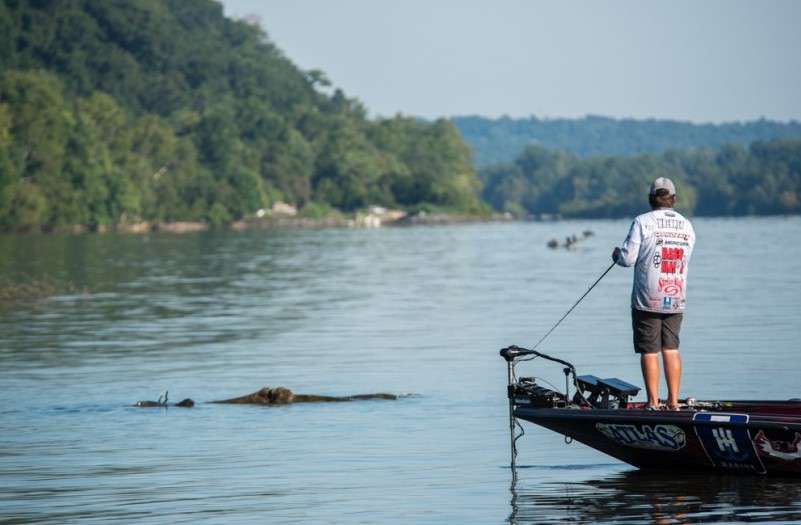
Last week I called these the blah days. At best the fishing is so-so in most of the country. But it won’t be long and things will improve. The temperature is supposed to break next week, and the days are getting a minute or two shorter with every sunset.
I’d guess that by the end of this month, or the first week in October, the fall transition will be underway. It doesn’t happen all at once, though. It’s a back and forth process that’ll last well into November. Typically they’ll move at least a half-dozen times before winter.
When a cold front hits they’ll move way back into shallow water, sometimes no more than a foot deep. When it warms for a few days everything will move out a little ways, maybe into the 5 or 6 foot range. As time goes along and everything gets colder the shallow periods will get longer and the deeper periods will get shorter.
The baitfish that the bass are eating get bigger, too. I don’t really understand the biology of it all but for some reason the smaller shad and other baitfish move first, well in front of the bigger ones. Regardless of whether or not I understand why it’s happening I do understand how it affects my fishing.
The most profound effect is on my lure selection. They get bigger as the shad get bigger and the end of the year gets closer.
One of my favorite fall baits is a walking stick. My preference is a Strike King KVD Sexy Dawg. Early in the season I like the Jr. size. It’s 3.75 inches long and weighs a half ounce. That’s pretty close to what they’re eating most of the time. Later, when the bigger baitfish move in, I fish the full size model.
That progression is about the same for all of my lures. I’m a big fan of the Red Eye Shad in the fall as well. I start out with the 1/4-ounce size but then later I move up to the 1/2-ounce size. And that’s exactly what I do with my buzzbaits and my traditional crankbaits.
Once it gets really cold I put away all my smaller stuff and go with all big baits. Besides that I don’t make any adjustments except for maybe slowing down my presentation. Even then, though, don’t get carried away with slow. They’re still fish, and the water isn’t covered over with ice. What they’re eating is still moving.
And keep in mind that how this all plays out depends to a great extent on where you live and where you fish. Up near Canada it’ll happen faster and the cold fronts will be more pronounced. Closer to where I live the transition will go on a lot longer and the early cold fronts won’t amount to much.
No matter, the deal at this time of the year is that the fish are feeding. Catching them is not about surprising them with an easy meal, and it’s not about enticing them into doing something they really don’t want to do. It’s about playing to their natural behavior. Do that and you’ll be successful.

